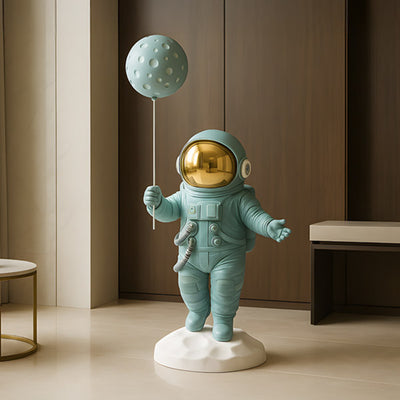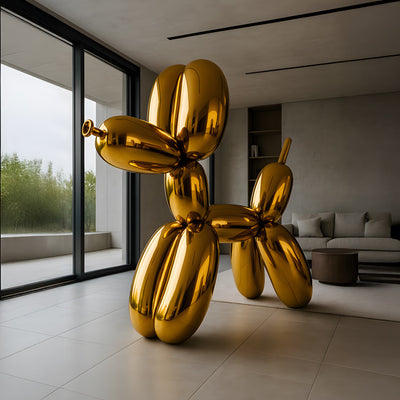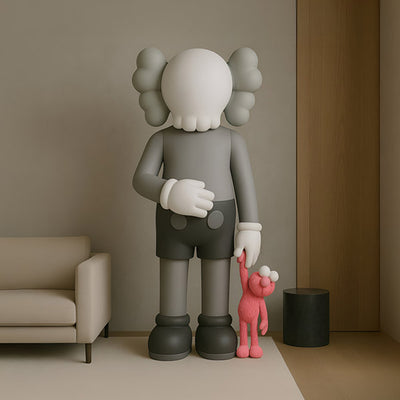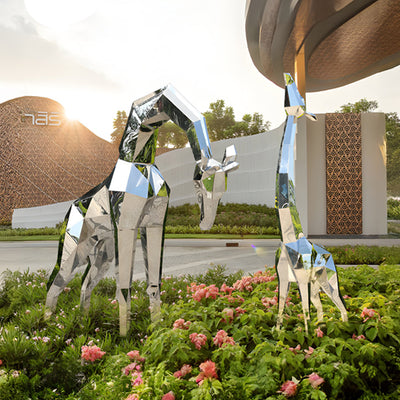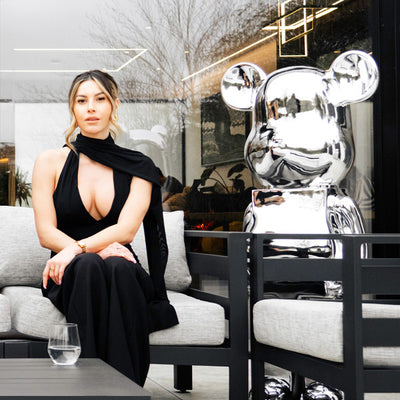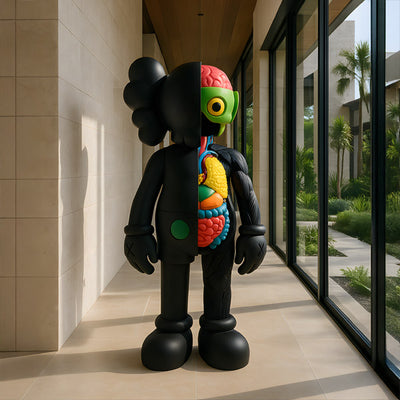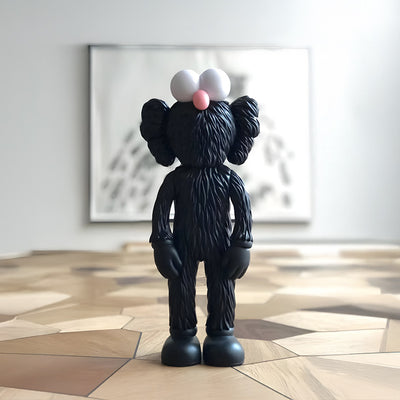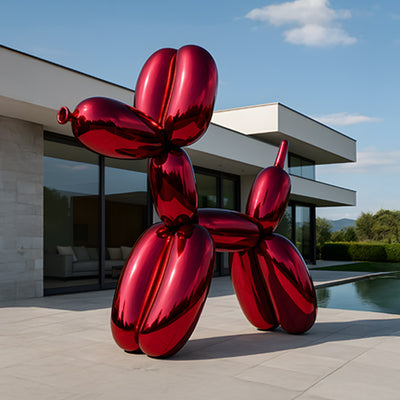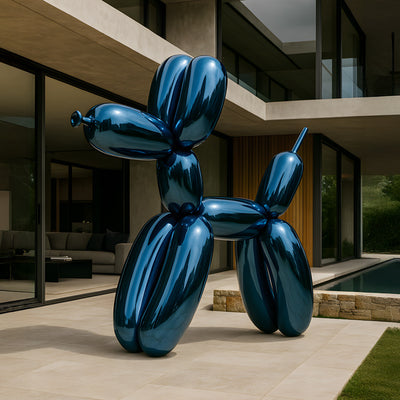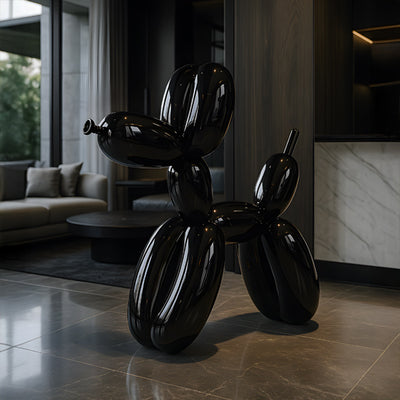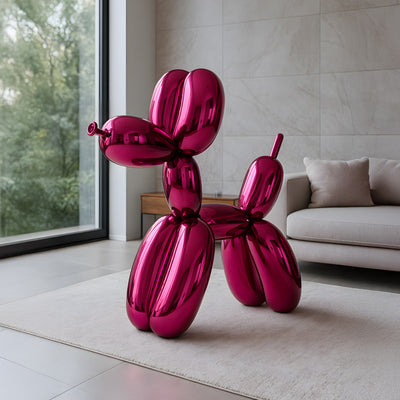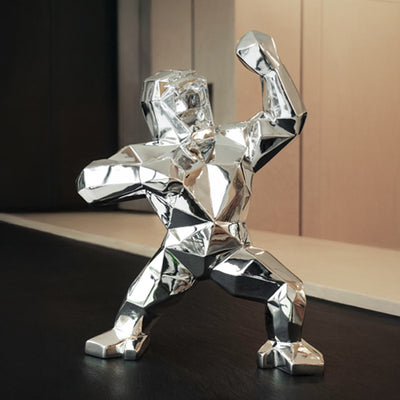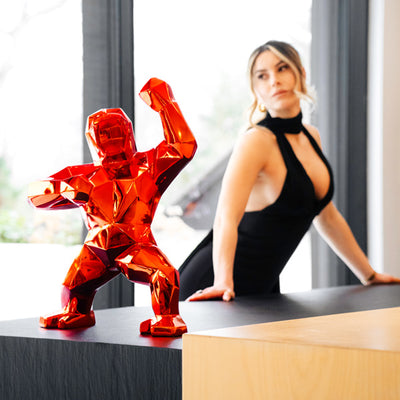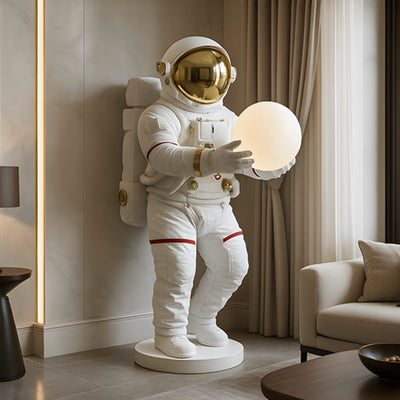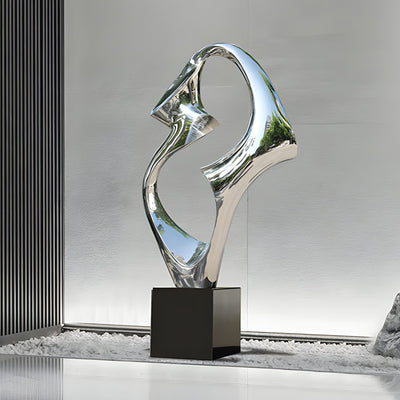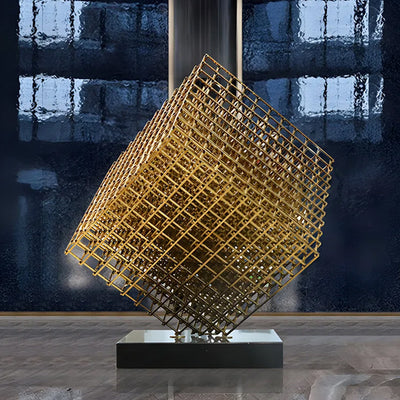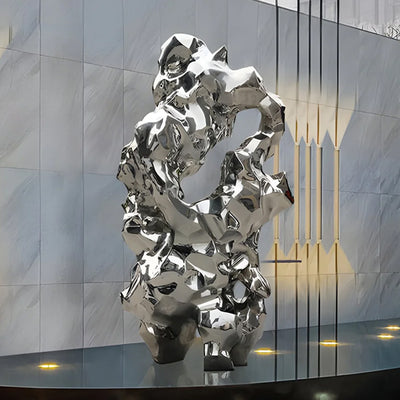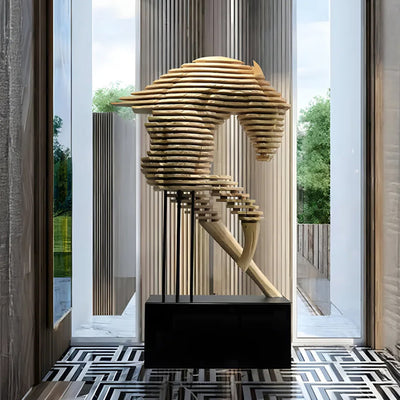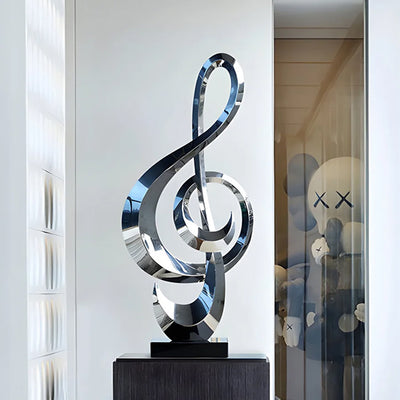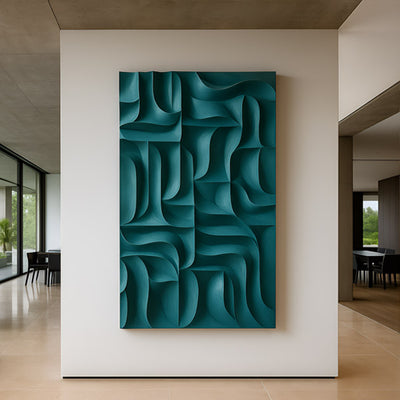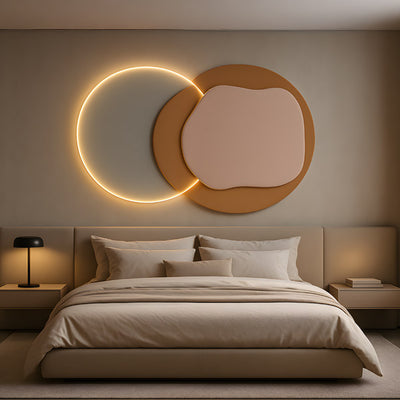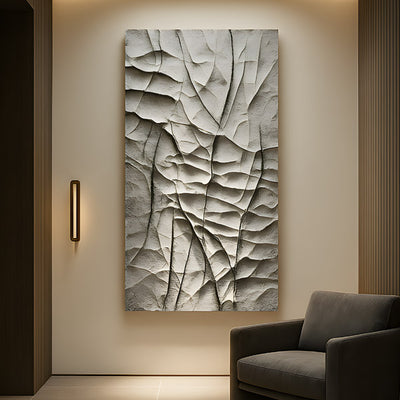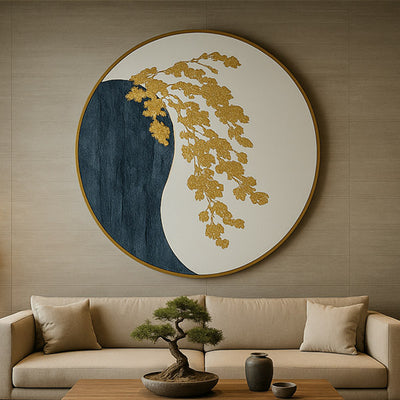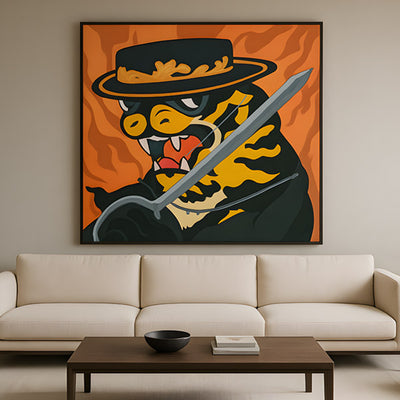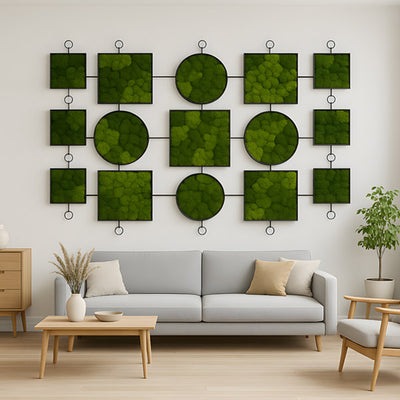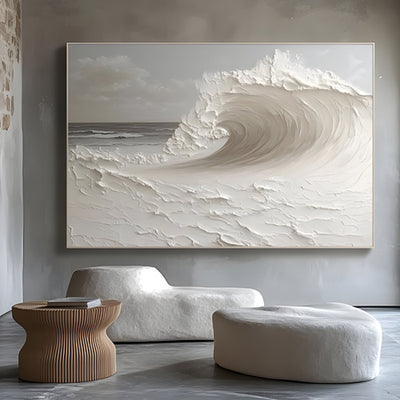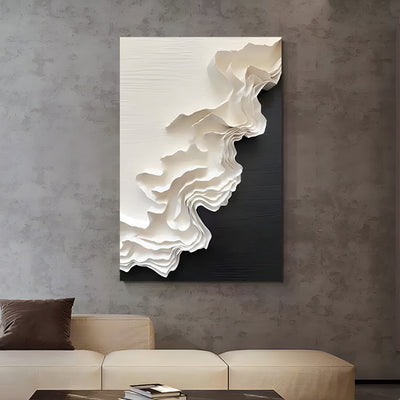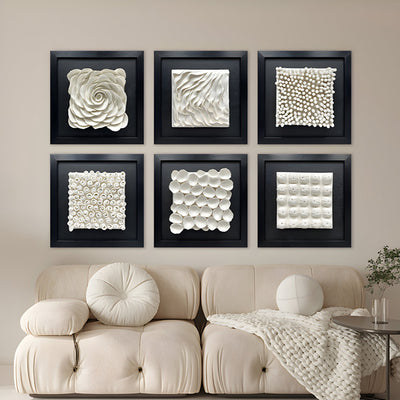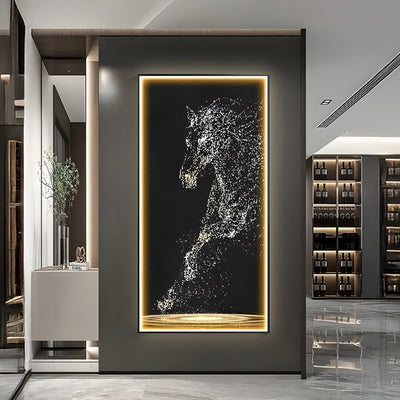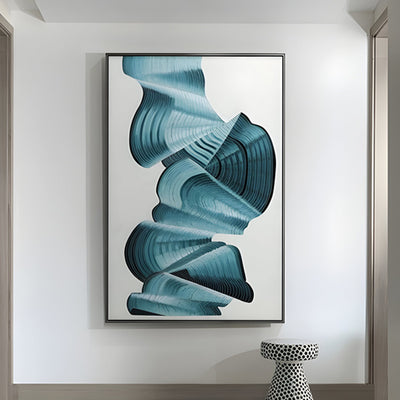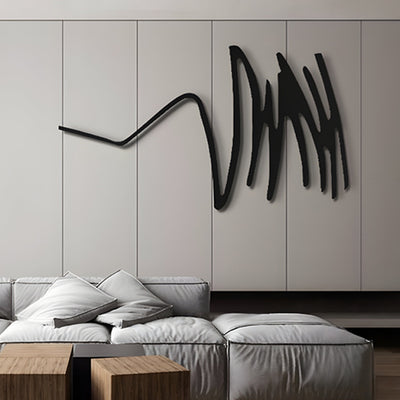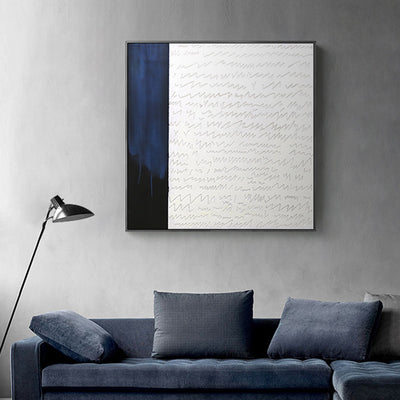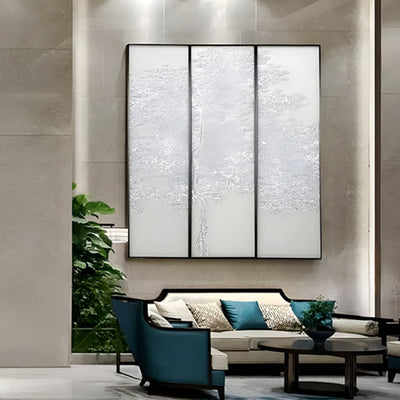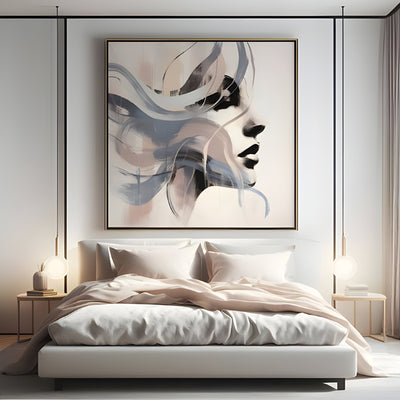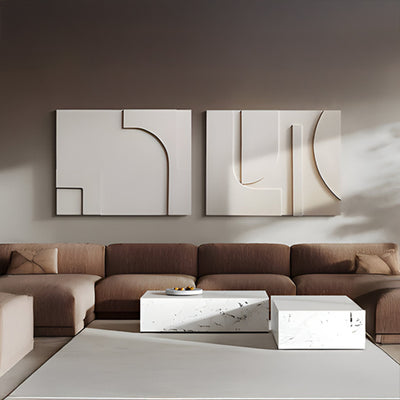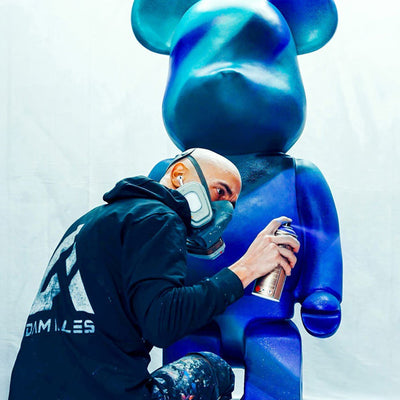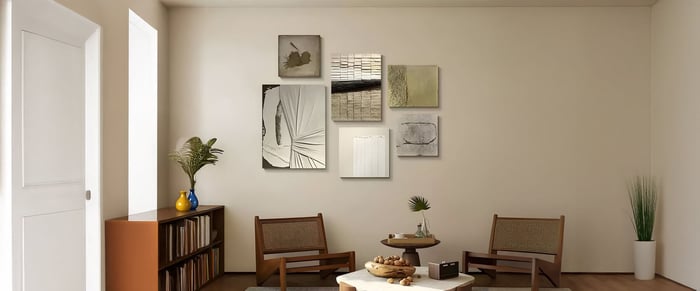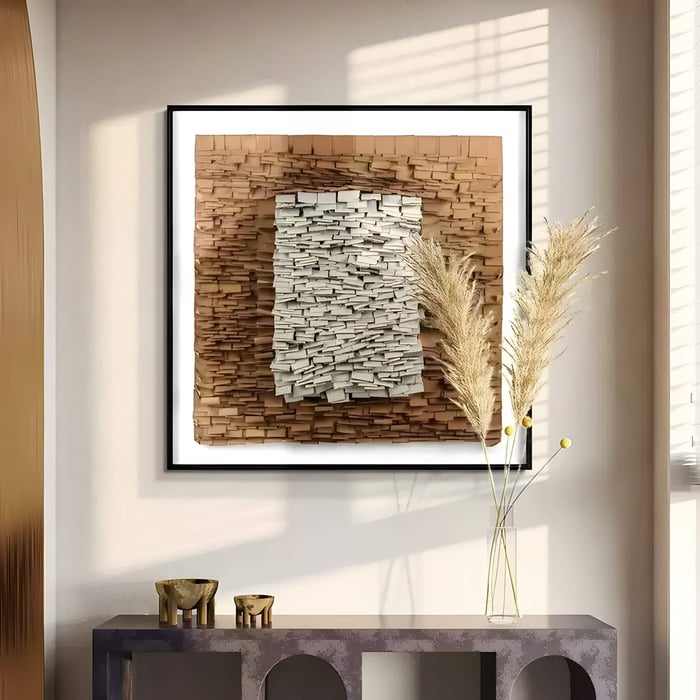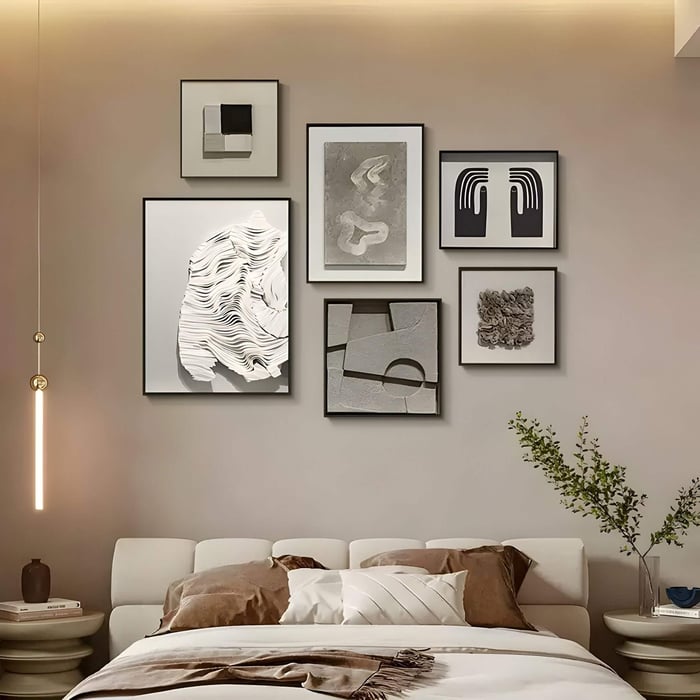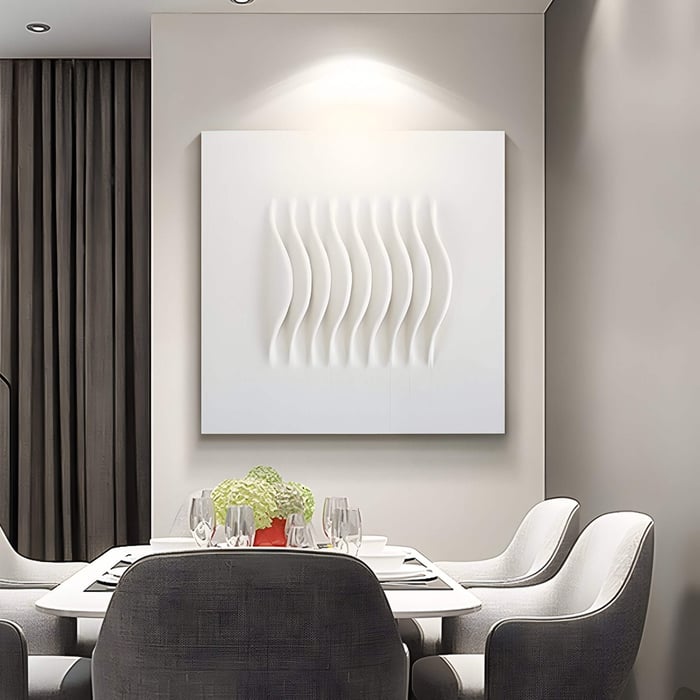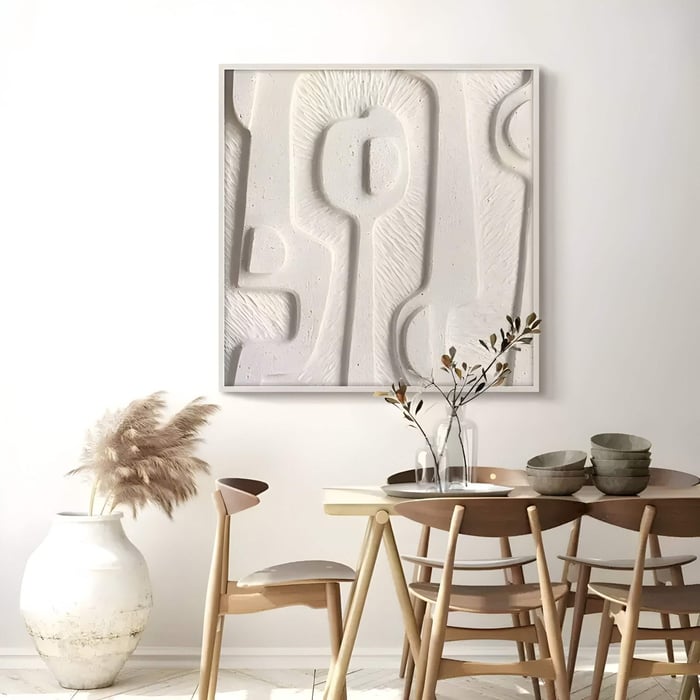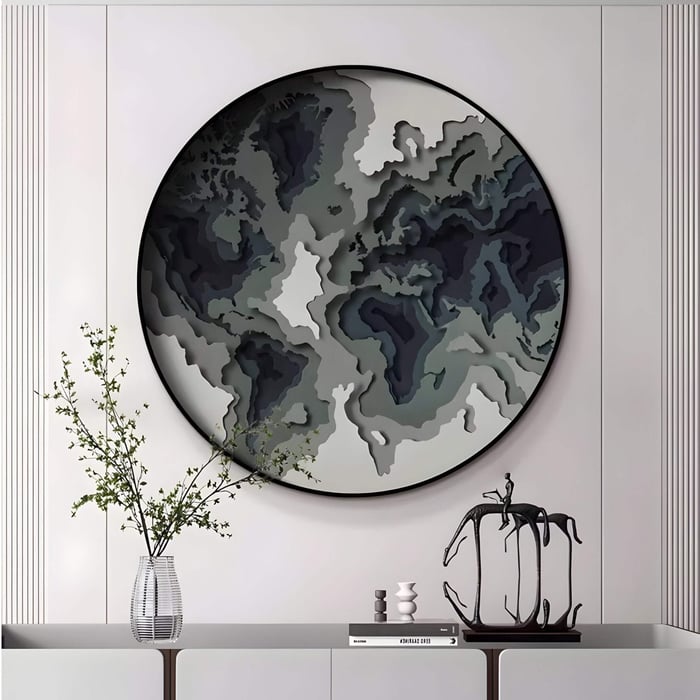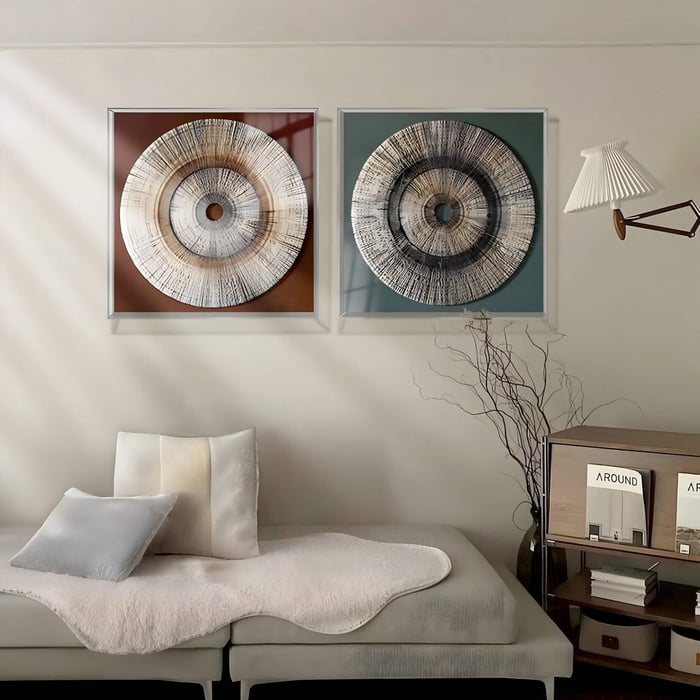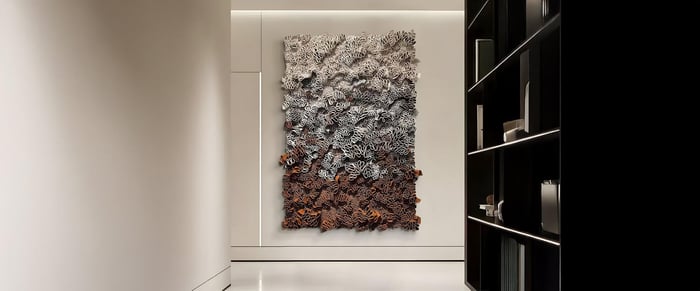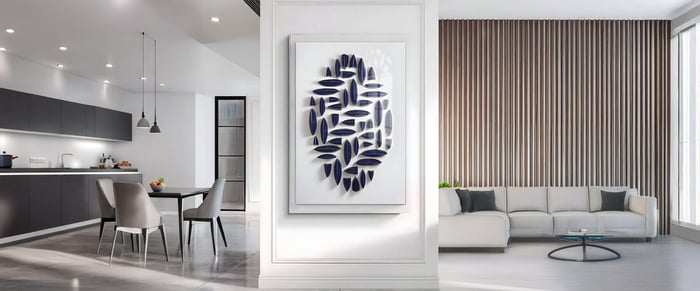There’s something undeniably grounding about the kind of art you want to reach out and touch. Wabi-Sabi Art, rooted in the Japanese aesthetic of finding beauty in imperfection, has long celebrated simplicity, transience, and raw, organic texture. But when that philosophy meets three-dimensional form, the result is nothing short of immersive.
3D wabi-sabi sculptural paintings go beyond surface-level visuals. With raised textures, asymmetrical layers, and tactile materials like clay, paper, and plaster, they invite you to connect with art not just visually, but physically. In the sections that follow, we’ll explore how wabi-sabi’s core principles - simplicity, impermanence, organic form, are clarified and amplified through 3D techniques. You’ll learn about signature materials, discover inspiring styles, weigh DIY versus professional commissions, and pick up styling and maintenance tips. By the end, you’ll be ready to choose or create a piece that invites not just admiration, but genuine interaction.
Understanding Wabi-Sabi in 3D Form
At its heart, wabi-sabi art cherishes the imperfect, the weathered, the spontaneous. It prizes economy of means over ornate abundance, and values the authenticity of unforced textures.
Philosophy:
Impermanence: Cracks, fissures and uneven edges speak to time’s passage.
Simplicity: Uncomplicated forms - petals, swaths of plaster or torn paper, underscore a humble elegance.
Organic Form: Shapes derived from nature, drips, curls, asymmetrical blooms, remind us of life’s inherent unpredictability.
Visual Elements:
Muted Tones: Earthy ochres, stone greys, soft whites and charcoal blacks set a serene backdrop.
Raw Textures: Finger-smoothed clay, cracked plaster, frayed paper edges invite tactile curiosity.
Asymmetry: Deliberate imbalance, one side denser, another spattered with pigment, speaks to wabi-sabi’s love of uneven beauty.
3D Transition:
When you lift a wabi-sabi canvas into relief, you don’t just see imperfection, you feel it. A low-relief blossom becomes more than an image; it becomes a presence. Layers of paper clay or plaster create shadows that shift as the day changes, transforming a static wall into an evolving landscape of light, texture and depth. This tactile quality deepens our connection to the material world and to the art’s quietly meditative mood.
How 3D Sculptural Paintings Engage the Senses
Touch Appeal:
Raised surfaces beckon. A tactile art panel studded with subtly curved petals or ridged strata encourages your fingertips to explore. This sensory invitation fosters a more intimate bond between viewer and artwork.
Light + Shadow Play:
Relief art is alive with shadow. Even a few millimetres of depth can cast dramatic patterns under side lighting. Morning sun softens edges; evening lamps sharpen them. The interplay of light and shadow turns a wabi-sabi art panel into a living object, shifting its character throughout the day.
Organic Shapes:
Rounded clay forms and torn-paper appliqués recall seedpods, petals or river-worn stones. These shapes draw the eye inward, guiding you along irregular contours. Our brains, attuned to biomorphic forms, find such curves inherently soothing, an echo of the natural world’s gentle irregularity.
By combining tactile textures with dynamic shadow, 3D Wabi-Sabi paintings transcend the two-dimensional plane. They awaken both vision and touch, inviting a multisensory exploration that grounded, flat art simply cannot replicate.
Standout Styles & Applications
1. Organic Floral Reliefs
Clusters of clay petals, seed pods or bark textures sprout from linen or painted wood. Muted earth tones - ochre, umber, slate grey, lend these organic art paintings a sense of serene growth. Perfect above consoles or in dining areas, they echo natural cycles without overwhelming the space.
2. Geometric Wabi-Sabi
Rough-hewn polygons and near-spheres break perfect symmetry. Edges are deliberately uneven, surfaces lightly scored. These textured geometric art panels balance order and imperfection, suiting modern hallways or corporate lobbies seeking a hint of warmth.
3. Mixed-Media Collage Panels
Found objects, bits of torn handmade paper, mineral pigment pastes, small wood fragments, embed into relief. This mixed-media relief approach foregrounds the Wabi-Sabi ethos of honouring discarded beauty. Display in bedrooms or creative studios to spark contemplation.
4. Textured Acoustic Panels
Silent yet tactile, acoustic-graded plaster or foam panels shaped into 3D ridges both dampen sound and delight the fingers. Ideal for open-plan living rooms or home offices, they pair function with form.
5. Earth-Tone Textural Pieces
Rust patinas, amber glazes and brown oxide washes amplify natural imperfection. A single panel of rustic minimalist wall décor above a mantel transforms a hearth into a textural focal point.
6. Neutral Relief Canvases
White-on-white reliefs, think subtle leaf imprints or curved sheets of paper-clay, offer whisper-quiet elegance. Architectural gallery spaces or minimalist bedrooms benefit from these low-relief canvas art pieces that glow under soft light.
Styling with Sculptural Wabi-Sabi Art
Placement Tips:
Mount tactile pieces at “hand height” (around 1.4 m from floor) in living rooms or entryways to invite gentle touch. In dining areas, position reliefs just above sightline, ensuring diners can appreciate form without impeding conversation.
Pairing Décor:
Echo the artwork’s natural materials with furnishings in raw timber, linen upholstery or unglazed ceramics. A linen-draped sideboard beneath a plaster relief and a woven jute rug below create harmony.
Frame vs Unframed:
Frameless reliefs feel more immediate, encouraging tactile engagement. If you prefer framing, choose a simple floating timber frame that leaves edges exposed, reinforcing wabi-sabi’s modesty.
Size & Scale:
A single large panel anchors a room; a triptych of smaller pieces fosters rhythm along corridors. For compact spaces, 40×40 cm reliefs grouped in threes maintain visual interest without dominating.
Maintenance & Longevity
Gentle Dusting: Use a soft-bristle brush weekly to remove dust from relief crevices without scratching clay or plaster.
Spot Cleaning: Dampen a lint-free cloth to gently wipe mixed-media areas. Always test a hidden corner first.
Handling: Minimise direct contact, oil from skin can stain raw clay or paper pulp over time.
Material Durability: Keep plaster wall art and clay-based reliefs indoors in stable humidity (40–60%). Acoustic foam panels withstand higher traffic and moisture.
Where to Source & Commission
Artisan Marketplaces:
Browse Etsy or local craft fairs for emerging handmade wall sculptures in paper clay and plaster. Many sellers ship small-format relief panels.
Specialist Studios:
For larger or more intricate work, approach ceramic and mixed-media workshops offering bespoke sculptural paintings. They’ll guide you through material choices and wall-mounting requirements.
Commissioning Steps:
Share mood boards, desired dimensions and preferred textures. Agree on materials - natural clay, plaster, mixed media, and finishes (patina, wash, raw). Confirm lead times and on-site installation needs.
Budget Ranges:
DIY/Mid-range: £400–£800 for medium panels (60×60 cm).
Bespoke Large Works: £1,000+ for site-specific installations and elaborate mixed-media pieces.
Conclusion: Reconnecting Through Texture and Imperfection
In our digitally smooth world, wabi-sabi art in three dimensions offers a tactile antidote, a reminder that beauty resides in cracks, fissures and asymmetry. Sculptural paintings in clay, plaster or mixed media invite us to slow down, to touch, to observe the play of light and shadow across imperfect surfaces. Whether you choose organic floral reliefs, geometric wabi-sabi panels or acoustic-grade textural art, thoughtful placement and complementary décor will amplify their mindful presence.
They’re not just decor. They’re an experience. A chance to reconnect with what’s imperfect, organic, and beautifully human. Explore our curated wabi-sabi art collection at Giant Sculptures or commission a bespoke sculptural painting that celebrates the beauty of imperfection.
